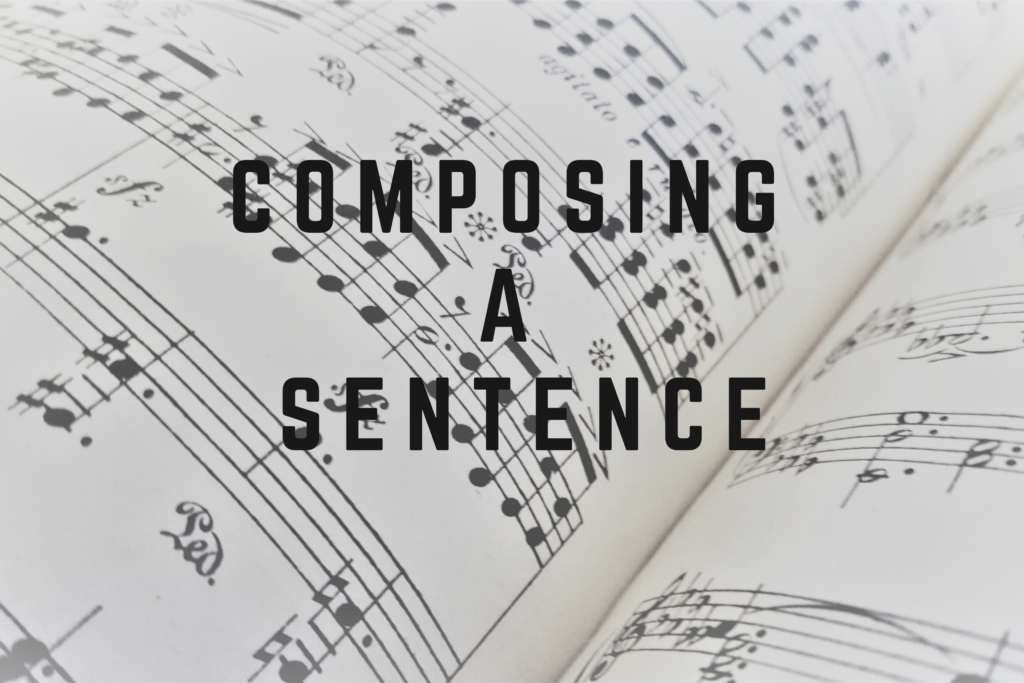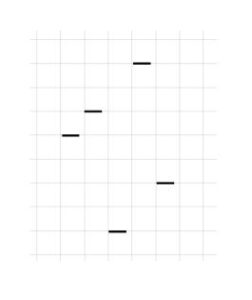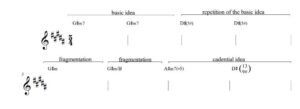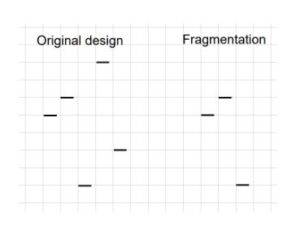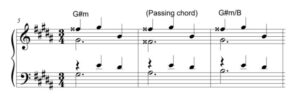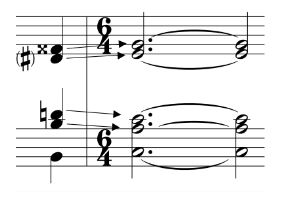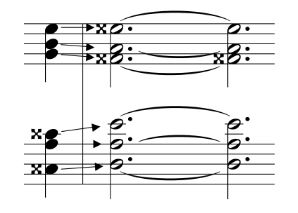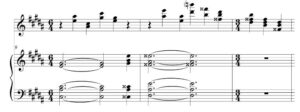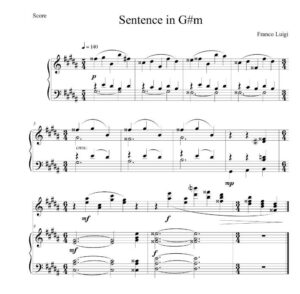Music Theory Resoucers
Composing a Sentence
Welcome to a new article belonging to the series on William Caplin´s formal theory.
This is the third chapter of this series of articles.
In today´s article, we will explain how to compose a work following the formal structure of the sentence. The previous article analysed examples from the classical period, in which triadic and diatonic harmony predominate. Today we will illustrate how to apply the aforementioned concepts to a more original language and further away from the aesthetics of classicism.
The first thing we must do when composing a piece of music is to define the time signature and the key signature. For this piece, we will choose a time signature of 5/4, and the key signature will be G#m (whose key signature contains five sharps).
We already know that the structure of the sentence contains 2 measures of basic idea, 2 measures of repetition of the basic idea, a fragmentation (that is normally repeated on bar 6), and a cadential idea.
So far, our scheme for composing the sentence would look like this:
The next step is to think of an abstract design that lasts one or two bars and fulfils the role of a basic idea. To think about the design, we will use a grid sheet as this will help us get rid of superficial distractions such as the quality of the chords we use.
Let’s keep it simple and use sounds that are the same duration. Each line that appears in the following illustration represents a sound of our design.
The main features of this design are the following:
- Contains five sounds.
- None of the sounds is repeated.
- All sounds have the same duration.
- The sounds are presented sequentially and adjacently. In other words, the sounds do not overlap, and there are no rests between them.
Now that we have created our design, we need to find notes in G#m that allow us to render it.
Here is a possible result:
Before we continue, we need to think about the chords we want to use. In this case, since our objective is to move away from the aesthetics of classicism, we will use chords with sevenths, ninths, elevenths, and thirteens, as well as augmented triads and chromatic chords.
When the harmony reaches a significant degree of complexity, the traditional figured bass becomes cumbersome. For this reason, we will use lead-sheet symbols throughout this article.
We already have the key signature, the time signature, the overall formal structure, the harmonic progression, and the design. To complete the first 4 bars of the piece, we must choose notes that comply with the design and the pre-set harmony.
Below, we show a schematic with all the elements discussed so far. To help the reader, we have placed the non-chord tones in red brackets.
In the D#(5#) chord, we have not placed the note B in parentheses since that chord could be analysed as the dominant of G#m or even as a B(5#). Either of two analyses is valid since both chords have a dominant function.
The next step is to write the bass line. We want harmony, despite being complex, to be clearly perceived. We will only use chord tones in the bass to achieve this goal.
Let’s write the first four bars of the melody along with the bass to get a general idea of the direction our work is taking:
What we have written so far works, but the texture is poor since we only have a design on the right hand and a simple accompaniment on the left hand. In order to enrich the texture, we will add a melody on the left hand. The non-chord tones of the left-hand melody are marked with red brackets.
The result could be the following:
We have finished composing the first four bars of our work, what William Caplin calls a “presentation phrase”.
The next step in the composition of a sentence is fragmentation. This compositional resource consists of taking a small part of the design and developing it.
Then, an interesting phenomenon happens: We must make a time signature change since the fragmented design contains only three crotchets. Therefore, the new time signature will be 3/4.
We must now select the chords we want to use for the measures where the fragmentation occurs.
In this case, we can take advantage of the three-note design being repeated three times and, therefore, start on the root-position tonic, continue with a passing chord, and then reach the first-inversion tonic.
Below are bars 5, 6 and 7, of our composition with a four-voice texture:
In order to finish composing our sentence, we must add a cadence. The cadence types are authentic, plagal, deceptive, and half-cadence. We will use a half-cadence.
To confirm the tonal center, we will use a complete cadential progression, which involves the following harmonic functions: initial tonic, pre-dominant, and dominant.
The harmonic progression will be as follows:
Below is the aforementioned harmonic progression with a possible realisation of the voice leading.
Note that the passing chord in bar 8 is dissonant since the minor second interval produced between the notes D and D# has this quality. However, this is an acceptable dissonance in this context since the two upper voices resolve by a rising semitone, while the remaining inner voices resolve by a falling semitone, thus creating a smooth resolution.
Something similar happens in the passing chord of measure 9: the A# is maintained while all the other voices move by conjunct motion or leap no greater than a third.
Now, in order to enrich the texture, we will add the original 5-note design. When wanting to add the 5-note design, a problem arises. Namely, on the first beat of the bar, our hands are busy playing a chord, so we will only include the last four notes of the design.
Finally, we will add tempo marks, dynamics, articulation, and expression markings.
Here is the score of the piece, plus its audio.
We have reached the end of this article. The next article, 4th in this series, will be about the period, in light of W. Caplin’s theory. Stay tuned!

